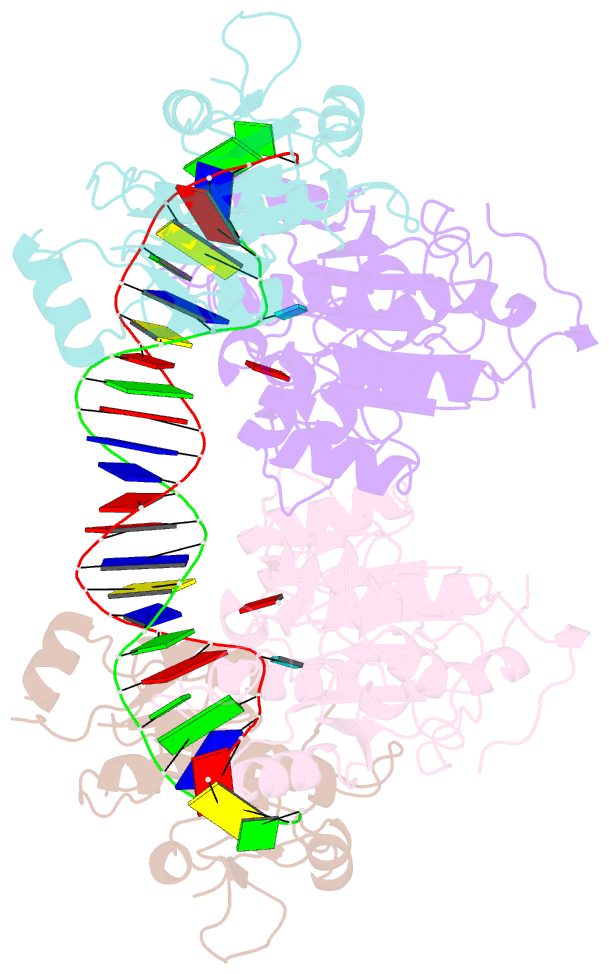Summary information and primary citation
- PDB-id
- 6u8x; SNAP-derived features in text and JSON formats;
DNAproDB
- Class
- transferase-DNA
- Method
- X-ray (2.95 Å)
- Summary
- Crystal structure of dnmt3b-dnmt3l in complex with cpapg DNA
- Reference
- Gao L, Emperle M, Guo Y, Grimm SA, Ren W, Adam S, Uryu H, Zhang ZM, Chen D, Yin J, Dukatz M, Anteneh H, Jurkowska RZ, Lu J, Wang Y, Bashtrykov P, Wade PA, Wang GG, Jeltsch A, Song J (2020): "Comprehensive structure-function characterization of DNMT3B and DNMT3A reveals distinctive de novo DNA methylation mechanisms." Nat Commun, 11, 3355. doi: 10.1038/s41467-020-17109-4.
- Abstract
- Mammalian DNA methylation patterns are established by two de novo DNA methyltransferases, DNMT3A and DNMT3B, which exhibit both redundant and distinctive methylation activities. However, the related molecular basis remains undetermined. Through comprehensive structural, enzymology and cellular characterization of DNMT3A and DNMT3B, we here report a multi-layered substrate-recognition mechanism underpinning their divergent genomic methylation activities. A hydrogen bond in the catalytic loop of DNMT3B causes a lower CpG specificity than DNMT3A, while the interplay of target recognition domain and homodimeric interface fine-tunes the distinct target selection between the two enzymes, with Lysine 777 of DNMT3B acting as a unique sensor of the +1 flanking base. The divergent substrate preference between DNMT3A and DNMT3B provides an explanation for site-specific epigenomic alterations seen in ICF syndrome with DNMT3B mutations. Together, this study reveals distinctive substrate-readout mechanisms of the two DNMT3 enzymes, implicative of their differential roles during development and pathogenesis.





